Leucocytozoonosis (Blood Parasite Disease) in chickens, also known as avian malaria, are dangerous and can cause severe damage such as reduced weight gain, decreased egg production, anemia, weakened immunity, and increased susceptibility to other diseases, leading to a higher mortality rate. Let's know with Goovet what Avian Blood Parasite Disease is, and how to prevent and treat it.
The causes of Blood Parasite Disease in chickens
Leucocytozoonosis ( Blood Parasite Disease) in chickens is caused by a protozoan parasite in the blood called Leucocytozoon-cauleri. When mosquitoes bite and suck the blood of chickens or other poultry, the parasite's protozoa can be transmitted into the chicken's blood. Protozoa develop and become parasites in red blood cells. Because of the ability to asexual reproduction, the parasite destroys red blood cells and white blood cells and then migrates to other internal organs of the chicken causing many dangerous symptoms.

Image 1: Transmission route of leucocytozoonosis
The symptoms of Blood Parasite Disease in chickens
The incubation period of Avian Blood Parasite Disease, specifically Leucocytozoon, in chickens is typically around 7-12 days. However, this duration can vary depending on factors such as the specific strain of Leucocytozoon causing the disease, the number of parasites involved, and the overall health condition of the chickens.
- High fever, increased water intake, and diarrhea with greenish-yellow or whitish-green coloration in chickens
- Chickens are cold, unsteady walking, pale crest, slimy white cockscomb, ruffled feathers, rapid weight loss
- Chickens have difficulty breathing, shrink their necks, stand alone, then stop eating and die.
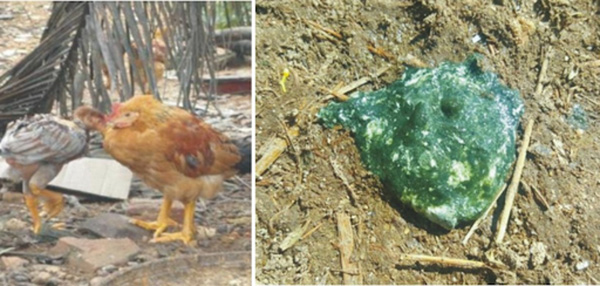
Image 2: Chickens are cold, unsteady walking, diarrhea with greenish-yellow or whitish-green
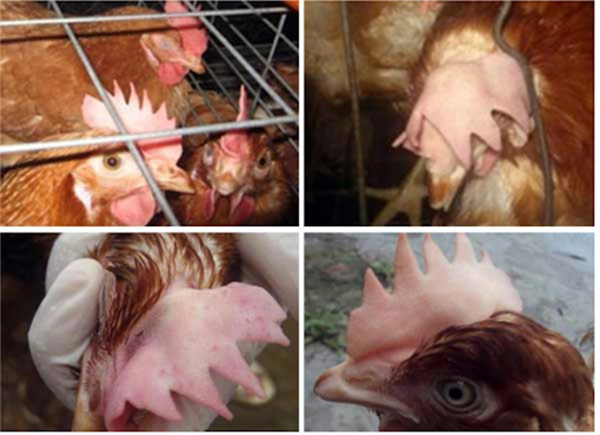
Image 3: Chicken's cockscomb is pale, white, chickens can be feverish.
- In the first period, chickens often die at night then can be died all day. Dead chickens vomit blood in the mouth, nose, and have black cockscomb.
- In laying hens, there is a sudden decrease or cessation of egg production. The size of the eggs is abnormal, either smaller than usual or the eggshells are thin and easily breakable, or they can be excessively thick.
The consequences of Blood Parasite Disease in chickens
+ Chickens are skinny, on the carcass, especially on the chest and legs have many hematoma caused by bite scars of insects.
+ Hemorrhage is present in multiple internal organs such as the liver, pancreas, kidneys, and ovaries, appearing as circular spots of bleeding.
+ There is widespread hemorrhaging on the muscles of the chest, thigh, beneath the skin, legs, and wings.
+ The blood is diluted, and it does not clot or clot with difficulty.
+ There is pulmonary hemorrhage, and blood pooling occurs in the abdominal cavity.
+ The liver and spleen are swollen and exhibit ulceration and easy rupture.
+ The intestines contain greenish feces. In cases of prolonged illness, numerous white parasitic nodules like grains of rice are scattered in the spleen.
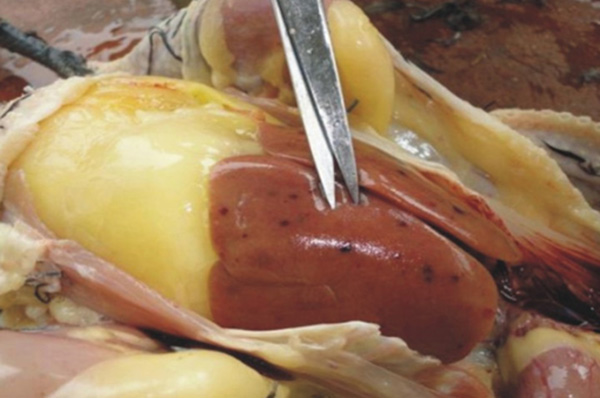
Image 4: Hemorrhage in the liver is a characteristic symptom of blood parasite infection.
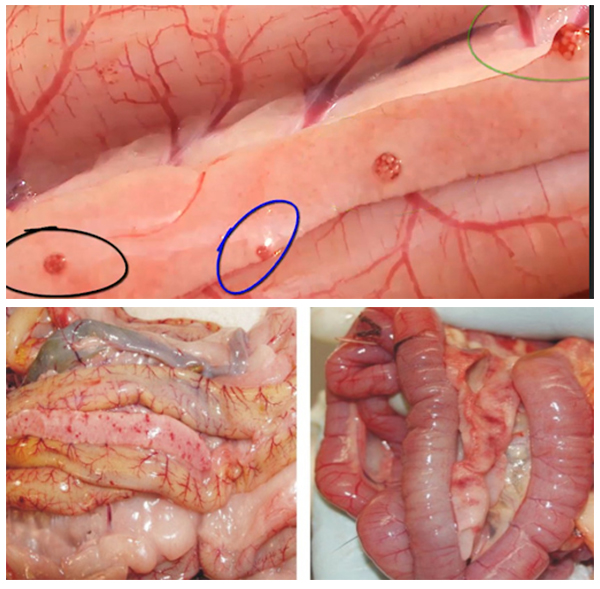
Image 5: The small intestine and pancreas are susceptible to damage in cases of blood parasite infection.
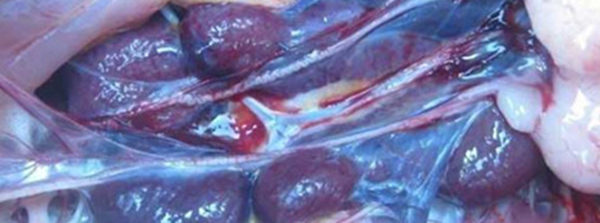
Image 6: Hemorrhage in the kidneys is observed in cases of blood parasite infection.
Prevention of Blood Parasite Disease in chickens
- Clean livestock farm environment: Avoid constructing livestock farms in flooded areas. Regularly remove dense dust, maintain a clean environment for animal husbandry, and disinfect the barn using POVIDINE - 10% at a dosage of 10ml/3 liters of water.
- Insect control: Spray mosquito and insect repellent throughout the livestock area using GTOX-200 at a dosage of 50 ml/2 liters of water for every 40 square meters of surface area to eliminate disease-transmitting intermediate hosts.
- Boosting immune system for the chicken flock: Regularly supplement the chicken flock with SORBITOL B12 + B.COMPLEX C NEW + LACZYME at a dosage of 1g/2 liters of water.
- Separate infected chickens: If there are chickens infected with a disease, isolate them from the remaining flock to prevent the spread of the disease.
Treatment regimens for poultry bloodborne parasitic diseases in chickens
Step 1: Immediately prevent the intermediate host from coming into contact with the chicken flock.
- Clean the entire camp area thoroughly, ensuring there are no places for insects to inhabit, spray insecticides to disinfect the livestock environment, and use G-ALDEKOL DES FF at a dosage of 5 ml/1 liter of water.
- Use insecticide to spray inside and around the camp to control insects and mosquitoes. Apply GTOX-200 at a dosage of 50 ml/2 liters of water for every 40 square meters of surface area.
- Replace the bedding material in the barn after it has been disinfected. Sprinkle LIVESTOCK BEDDING (PROBIOTIC BEDDING FOR LIVESTOCK) on the livestock barn floor to reduce toxic gasses, eliminate odors, and limit the growth of bacteria.
Step 2: Use specialized treatment for disease in combination with immune-boosting supplements for the animals.
Regimen 1:
Morning: Mix SULFA-TRIME 408 into the feed for chickens at a dosage of 1ml/30-35 kg body weight. Additionally, administer ANAGIN-C to reduce fever at a dosage of 2-4g/1 liter of water
Afternoon: Use HERBAL ELECTROLYTES GLUCO K+C + SORBITOL B12 + LACTIC at a dosage of 1g/1 liter of water.
Treatment duration: 5-7 days.
Regimen 2:
Morning: Mix ANTI - COCCI into the feed for chickens at a dosage of 1g/10-15 kg body weight. Additionally, administer PARA-C to reduce fever at a dosage of 1g/4-6 kg body weight.
Afternoon: Supplement with STRONG LIVER at a dosage of 3 ml/1 liter of water + VITAMIN C 35 at a dosage of 1g/3 liters of drinking water + LACZYME at a dosage of 1g/1 liter of water.
Treatment duration: 5-7 days.
Regimen 3:
Morning: Use SUPER SULFA at a dosage of 1g/4-6 kg body weight, combined with fever reduction using ANAGIN-C at a dosage of 2-4g/1 liter of water.
Afternoon: Supplement with STRONG LIVER SPECIAL at a dosage of 1 ml/1 liter of water + ELECTRO GLUCO KC at a dosage of 1 ml/2 liters of water + GARLIC AMINO at a dosage of 1 ml/1-5 liters of water.
Treatment duration: 5-7 days.
Step 3: After successfully treating the animals, implement long-term disease prevention measures for the entire farm.
- Mix SULFA-TRIME 408 into the poultry feed for disease prevention at a dosage of 1 ml/60-70 kg body weight. Continuously feed this mixture for 5-7 days, then take a break for approximately 3-5 days before resuming (especially during rainy, windy, and humid seasons).
- Alongside that, it is necessary to supplement liver and kidney support medication to enhance the effectiveness of the treatment and avoid any potential harm to the liver and kidneys. Using SORBITOL B12 or STRONG LIVER or STRONG LIVER SPECIAL
Goovet has provided information on the causes, symptoms, pathology, prevention, and treatment of Blood Parasite Disease in above article. Goovet wishes all livestock farmers success!
